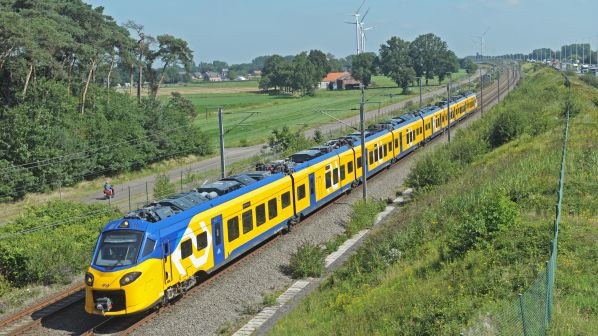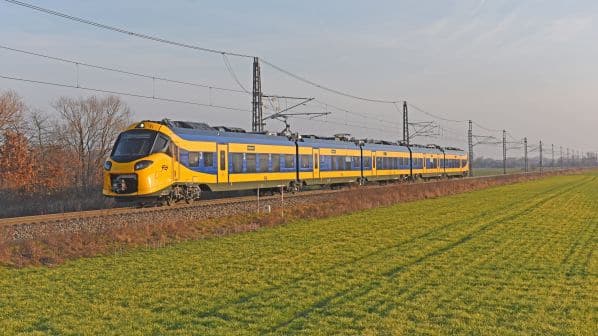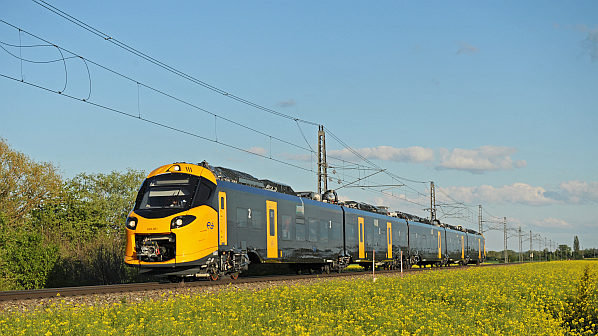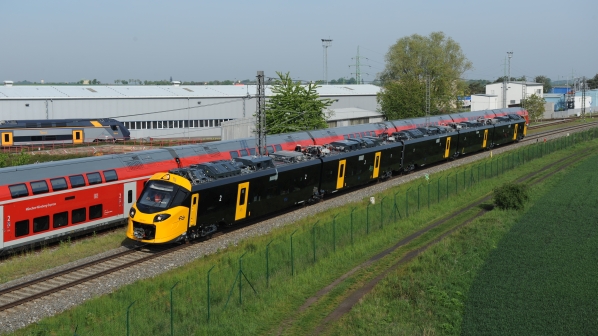THE European Union Agency for Railways (ERA) has granted the Authorisation to Place on the Market (APOM) for Intercity New Generation Belgium (ICNGB) trains ordered by Netherlands Railways (NS), enabling the 20-strong fleet to enter passenger service.
The ICNGB is an Alstom Coradia Stream design and will now be deployed by NS on IC services between Amsterdam and Brussels. The new train has been approved to operate on both the Dutch and Belgian networks, including high-speed lines as specified.
With a maximum speed of 200km/h, the ICNGB is a high-speed train in accordance with TSI LOC & PAS, the EU Technical Specification for Interoperability (TSI) for passenger rolling stock, which sets a threshold of 189km/h for this definition.
The ICNGB is able to draw traction current at 1.5kV dc in the Netherlands, 3kV dc in Belgium and at 25kV 50Hz ac on high-speed lines. The APOM specifically excludes the ICNGB from operating on cross-border routes between the Netherlands and Germany, and on the freight-only Betuwe line between the port of Rotterdam and the German border.
In Belgium, the ICNGB is excluded from the freight-only Line 10, which runs through the Liefkenshoek Tunnel under the River Scheldt in Antwerp, and from Line 125/1 between Borgnet Junction and Leman Junction near Liège.
The ICNGB is also prohibited from operating on all conventional lines with 25kV 50Hz ac electrification in Belgium, and high-speed lines equipped with TVM 430 cab signalling system, such as the route from Brussels to the French border.
The APOM allows the ICNGB to operate up to its maximum speed of 200km/h when taking traction current at 25kV 50Hz ac. Under 3kV dc the maximum speed is 200km/h only when operating as a single unit, and 190km/h when two sets are operating in multiple with their outer pantographs raised. Under 1.5kV dc in the Netherlands the maximum permitted speed is 160km/h.
The new train is only permitted to use platforms with a height of between 550mm and 760mm above the head of rail. Up to two eight-car ICNGB EMUs can operate in multiple, or one ICNGB with an eight-car ICNG EMU, or one ICNGB with one five-car ICNG. Both the ICNGB and ICNG have been equipped with Scharfenberg couplers.
With the APOM granted, NS immediately began test operations between Amsterdam and Brussels without passengers onboard. Staff training at both NS and Belgian National Railways (SNCB) is due to start soon, as personnel from both operators will staff the train along its full route from Amsterdam to Brussels. The new fleet is due enter service with the December 2024 timetable change.
Meanwhile, the introduction of the ICNG ordered by NS from Alstom for domestic routes is making progress, with the 10th train now having entered commercial service.
NS has deployed the ICNG on IC Direct services between Amsterdam Central and Rotterdam Central, and also between The Hague and Eindhoven, running on the southern section of part of the HSL-South high-speed line between Rotterdam and Breda.
NS has reported some teething problems with the new trains, but the situation is improving. NS and Alstom are working together to solve these problems and the manufacturer has undertaken a software update for the door management system.
During the course of 2024 ICNG EMUs will completely replace ICRm coaches hauled by 160km/h Traxx MS2 locomotives at each end of the train on all IC Direct and IC services on HSL-South. Alstom and NS have agreed that from this autumn the delivery of new INCG and INCGB fleets will increase to one train per week.
For detailed data on European train orders, subscribe to IRJ Pro.




